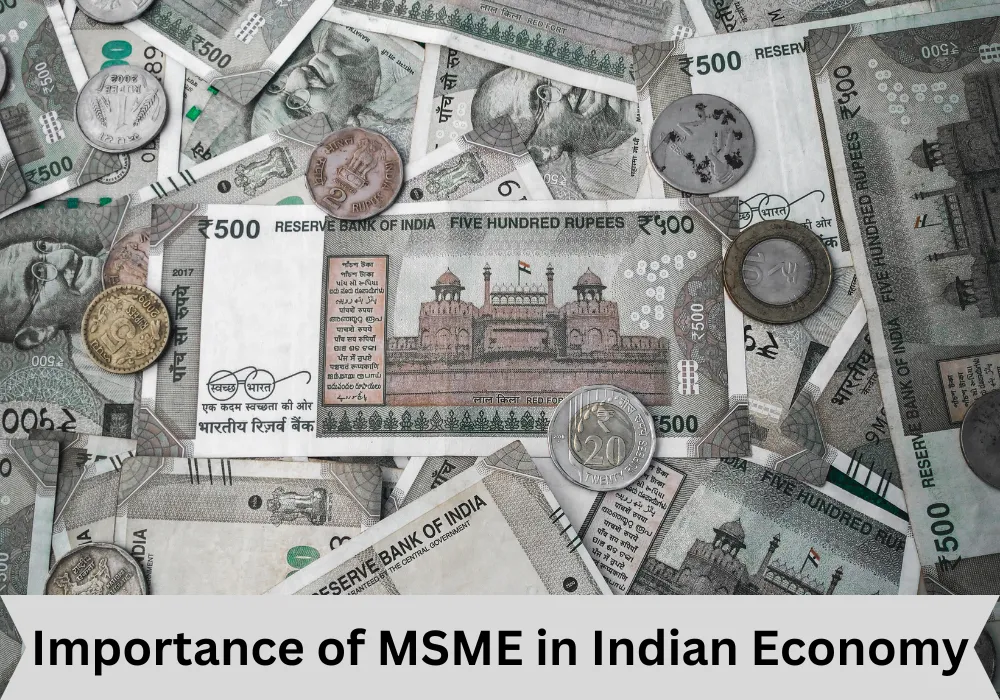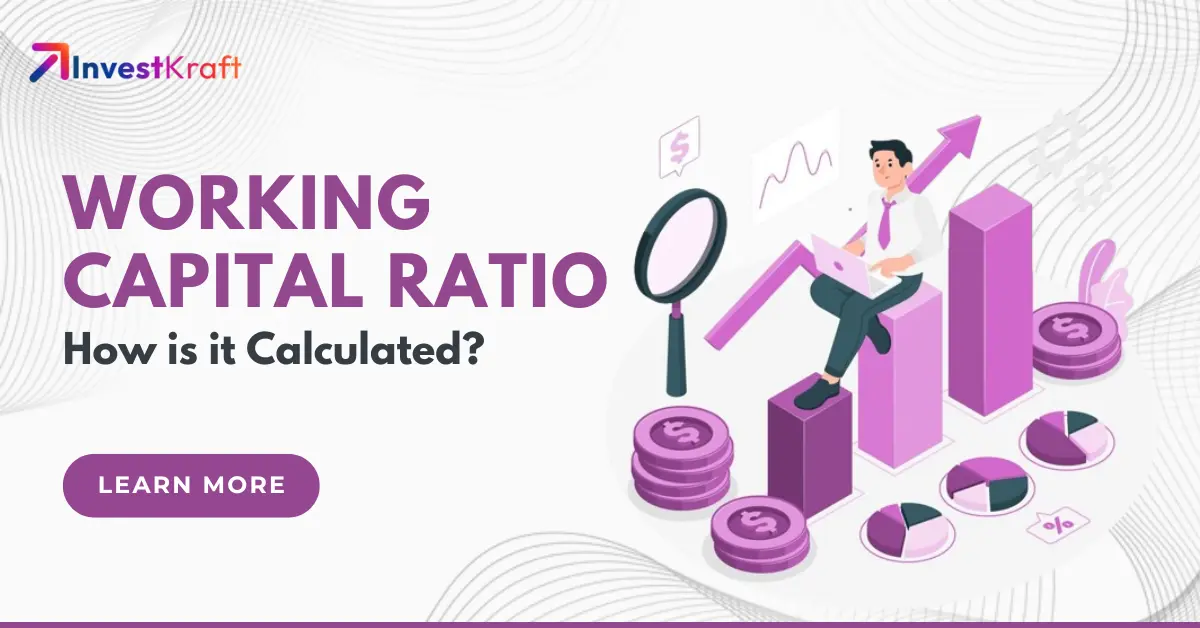Crucial Role of MSMEs in India's Economy 2024

Micro, Small, and Medium Enterprises (MSMEs) in India play a vital role in the economy as they contribute to over 40% of the country’s exports. Not only do they create jobs, but they also help promote economic distribution and reduce regional disparities. Additionally, the sector has a diverse workforce with a substantial number of women, highlighting its inclusive nature.
MSMEs, as important contributors to the Indian economy, provide local employment opportunities which benefit young individuals by allowing them to seek work near their homes. Moreover, these small and medium-sized enterprises serve as catalysts for innovation, fostering the development of new ideas and driving progress.
What Are MSMEs?
The Union Ministry of Micro, Small, and Medium Enterprises (M/o MSMEs) took a significant step by issuing a Gazette notification to implement the revised definition and criteria for MSMEs in India. The definition and criteria came into effect on 1st July 2020, marking a significant milestone in supporting and promoting the growth of small and medium businesses in the country.
In 2020, the Indian government made significant revisions to the MSME definition, increasing investment and turnover thresholds for micro, small and medium enterprises. The changes were announced as part of the Atmanirbhar Bharat package, to provide greater support to businesses in these categories. As a result, the investment and turnover limits for each category were raised, reflecting the evolving business landscape and economic conditions. The revisions aimed to align the MSME definition with current market realities and provide increased opportunities for growth and development.
Existing criteria for defining MSMEs, which are based on the MSMED Act 2006, have relatively low financial thresholds and differ for manufacturing and service units. However, the economy has undergone significant changes since then. Many representations were made after the package was announced on 13th May 2020, stating that the revision did not align with market conditions and should be further increased.
Responding to these representations, the Prime Minister decided to raise the limit for medium units. This adjustment aims to reflect current realities and simplify business operations.
How are MSMEs Categorized?
MSMEs were formerly categorized according to whether they were manufacturing or service-based businesses. Recent revisions have changed the categorization scheme, combining both groups under a single heading. According to investment size and yearly turnover, the new categorization is as follows:
- Micro - Businesses classified as micro-enterprises have an investment cap of $25,000 or less.
- Small - Small firms are those with investments of more than 25 lakh rupees but less than 5 crores.
- Medium - Businesses classified as medium firms have an investment of at least 5 crores but not more than 10 crores.
This categorization is important because it allows your business to be recognized as an MSME and have access to government programs and subsidies.
Role Of MSME In the Indian Economy
The Ministry of Agro and Rural Industries and the Ministry of Small Scale Industries amalgamated in 1961. The Ministry of Micro, Small, and Medium Enterprises (M/o MSME) was established as a result of this merger.
The MSME sector, which was in charge of creating and producing a wide range of goods, was under the ministry's control. The industry served both home and foreign markets. The expansion and development of the Khadi, Village, and Coir industries have been tremendously aided by MSMEs. MSMEs have also benefited from assistance from state governments, stakeholders, and various ministries, which has allowed them to grow.
More than 63 million MSMEs now exist across the nation as a result of the passing of the years. Statistics over time demonstrate how the MSME sector has contributed the majority of the nation's GDP. MSMEs were responsible for 30% of India's GDP in FY20. For people nationally, the MSME sector has also created a lot of job prospects.
MSMEs have contributed significantly and very economically to the industrialization of the nation's rural areas. Additionally, MSMEs have contributed to roughly 40% of India's overall exports in terms of world commerce.
The sector was recognized for having played a crucial role in India's economic recovery even during the COVID-19 pandemic-related economic crisis. The industry has become stronger as a result of government initiatives including subordinate debt reduction, equity injection, the Emergency Credit Line Guarantee Scheme, etc.
You may start your entrepreneurial adventure now that you are more aware of the significance of MSME in the economic growth of the country.
Contribution of MSME To the Indian Economy
- MSMEs are a significant contributor to India’s economy. With a share of 6.11% of the manufacturing GDP and 24.63% of service activities GDP, they play a vital role in these sectors. Despite their relatively lower share of total GDP grants, MSMEs contribute around 40% of the country’s exports. Moreover, they are crucial for generating employment opportunities and bringing valuable foreign exchange to India.
- India’s attention has increasingly shifted towards MSMEs as the country strives to reach its goal of becoming a USD 5 trillion economy.
- MSMEs play a crucial role in the Indian economy by producing a wide range of over 8,000 products, which not only cater to local household needs but also make a substantial contribution to India’s export industry.
- Promoting trade development and protecting the Indian economy from global economic shocks and adversities are the key benefits of this approach.
- In India, the MSME industry employs approximately 110 million people. It is worth noting that trade, services and manufacturing subsectors within the industry contribute fairly equally to the generation of employment opportunities.
- Micro-enterprises face difficulty in expanding into small and medium enterprises, a phenomenon known as the “Missing Middle”. This is due to various constraints like financial, regulatory, technological and operational limitations, making it challenging for MSMEs to grow. As a result, 97% of employment is provided solely by micro-enterprises, highlighting the significant impact of this issue.
- The majority of the enterprises in India are micro-scale and unable to grow into medium-sized ones. These micro-units employ 97% of the MSE’s workforce, relying heavily on manual labour without utilizing technology or capital assets to reduce production costs.
The Broader Impact of MSMEs on the Indian Economy in 2024
The MSME sector, accounting for about 33% of India’s GDP, has been instrumental in shaping the country’s economy. It is expected to contribute a significant USD 1 trillion to India’s total exports by 2028, highlighting its promising growth prospects. This underscores the powerful impact MSMEs have on India’s economic trajectory.
- India is becoming a manufacturing hotspot as companies move from China. This benefits small and medium enterprises, which can grow by meeting the increased demand and learning from industry giants. The Prime Minister’s frequent visit to the US has also opened the door for foreign investment, allowing MSMEs to expand and adopt new technologies.
- The Indian government is dedicated to supporting MSMEs and has implemented several measures to create an inclusive ecosystem. These measures include initiatives like the “Make in India” campaign, financial assistance programmes, improved access to funding and fostering partnerships. Additionally, the government is also focused on providing training programmes and streamlining business processes to empower MSMEs for success.
MSMEs in the Age of Digital Transformation
The collaboration between the government, service providers and users can greatly benefit small and medium-sized businesses in India. The digital landscape for businesses has evolved significantly, but catering to the diverse MSME sector remains a challenge. Encouraging businesses to adopt digital technology requires an ecosystem that offers finance and payment solutions, operations management and skill-building resources in an easily accessible manner.
The identified factors determining digital transformation among MSMEs include their level of digital interactions and the future implications.
- Small entrepreneurs are changing beliefs due to digital training and moving towards digital integration. They need to replicate the convenience of social commerce platforms like Facebook and WhatsApp.
- An increase in digital payment solutions promotes cashless transactions and reduces dependence on cash.
- Simplified compliance process and procurement norms for small businesses in e-commerce and digital finance.
- Relaxing regulations for cross-functional services.
- Need more players for successful integration with India Stack 2.0 with the UPI platform.
- Addressing security and privacy concerns for overlooked small business owners, especially women.
- Expanding online vendor payments to include small businesses.
- The active role of Fintechs is crucial to meet the small-scale requirements of micro businesses.
- The emergence of new technologies has revolutionized the digital landscape, offering a personalized segment of users who can truly appreciate the immense value and scalability they provide.
FAQs
Q. What Is The New Definition Of MSMEs?
- The MSME requirements for manufacturing units and service businesses used to be different. For the classification of MSMEs, manufacturing and service businesses are no longer separated. Previously, MSMEs relied on investments. The company's yearly revenue is now included in the updated definition of MSMEs.
Q. What Is No. Of MSMEs Are Present In India?
- More than nine crore MSMEs, or 1/3 of India's GDP, are estimated to exist in the country by the Ministry of MSME. Of the 9 crore MSMEs, 1.5 crore are GST registered. With simple Udyam Registration, there is potential for growth in MSME numbers in the upcoming years.
Q. What Makes India Relies So Much On the MSME Sector?
- By 2025, the Indian government wants to have a $5 trillion economy. To achieve this aim, MSME has emerged as a significant employer, opening up a plethora of professional prospects for India's youthful, energetic populace.
The Conclusion
Additionally, the government has implemented laws that improve MSMEs' access to finance by offering them discounted business loans. Visit Investkraft today to apply for unsecured business loans. We provide low-interest business loans from reputable banks and financial institutions with flexible repayment terms and EMI alternatives. Once here, you can also compare the rates of different lenders to discover the best choice for your startup.
Verify Phone Number
Related Post

InvestKraft: Best DSA App in India to Earn Money as a Direct Selling Agent
In India's dynamic financial sector, growth and income generation opportunities constantly evo...
Read more...
How to Earn Money Selling Loans and Insurance Online in 2025
Imagine earning lakhs from home—no office, no boss, just you and a smartphone. In 2025, sellin...
Read more...
25 Best Money-Earning Apps in India 2025 – No Investment Needed!
Want to turn your smartphone into a cash machine in 2025? India’s app scene is buzzing with free, no...
Read more...
Everything You Need to Know About Digital Gold Investments in 2025
Gold has been a trusted store of wealth for centuries, but in 2025, it’s getting a modern upgr...
Read more...
Guide to Unlisted Shares in India 2025: Opportunities, Risks, and How to Invest
Wondering how to tap into India's next big investment wave? Unlisted shares might be your answer.Wha...
Read more...
Top 10 Websites to Earn Money Online in India 2025
India’s digital economy is on fire—online earning platforms gained 25 million users in 2024, with in...
Read more...
InvestKraft Partner App: 5 Powerful Reasons to Download & Start Earning Today!
In today’s fast-paced financial world, having the right tools can make all the difference. Whe...
Read more...
5 Key Trends Redefining the BFSI Sector in India 2025
Banking, Financial Services, and Insurance (BFSI) sector in India is undergoing a transformative pha...
Read more...
How to Check If Your Business is Running Smoothly by Assessing Your Working Capital Ratio?
To fully understand your company’s performance, examining various metrics that shed light on differe...
Read more...
Understanding the Lifeblood of Business Called “Working Capital Cycle”
The working capital cycle, which measures how quickly a business can convert its current assets into...
Read more...Reach out to our Experts if you have any Doubts
Like the best things in life, Consultations @InvestKraft are free
Drop a Mail or give us a Missed Call & Begin your Investment Journey here



